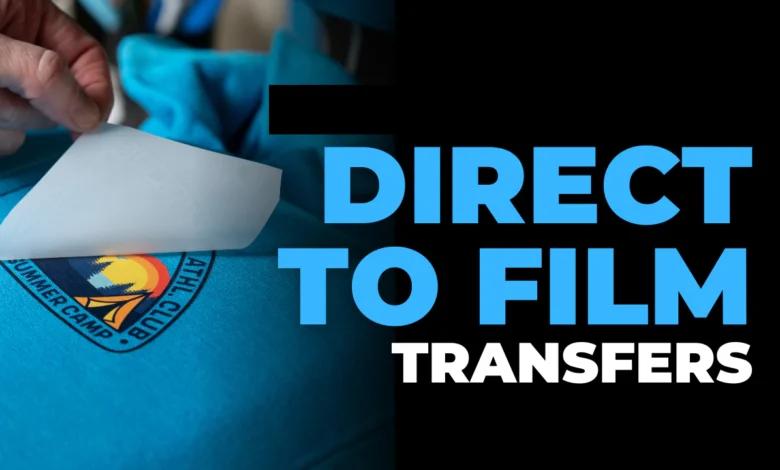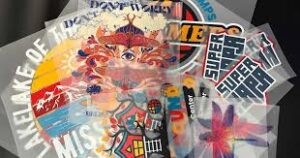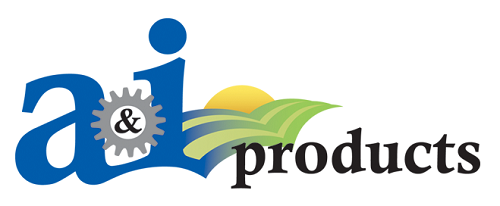What is DTF Transfer: Comprehensive Guide & Benefits

DTF transfer is becoming increasingly popular for its efficiency and quality in textile printing. But what is DTF transfer, Let me explain first.
DTF transfer, or Direct-to-Film transfer, is a printing technique that utilizes inkjet technology to print designs onto a special film. This film is then heat-pressed onto garments, such as T-shirts made from cotton, polyester, or blends, regardless of color. The process is popular in the garment decoration industry, thanks to its versatility and ability to use white ink.
What is DTF Transfer?
DTF transfer, or Direct to Film transfer, is a printing method used to create custom designs on textiles. DTF transfer is suitable for cotton, polyester, or blends in any color. The process involves printing a design onto a film using inkjet technology, applying a powder-based adhesive to the ink, and curing the film at high temperatures. Finally, the film is heat-pressed onto the garment, activating the adhesive to transfer the design effectively.

DTF printing is ideal for those wanting to add T-shirt personalization or customize other textile products—like cushion covers, masks, bags, and sweatshirts—to their cotton or polyester business in any color, all with a low initial investment.
How does DTF Transfer Work?
Here’s how it works:
- Design Creation: First, a design is created using graphic design software.
- Printing: The design is printed onto a special film using a DTF printer, which uses water-based inks.
- Powder Adhesive: After printing, a heat-sensitive adhesive powder is applied to the wet ink on the film.
- Curing: The film is then cured using heat, which allows the adhesive to bond with the ink.
- Transfer: The film is placed onto the fabric, and heat and pressure are applied using a heat press, transferring the design onto the fabric.
- Final Touch: After cooling, the film is peeled away, leaving the design adhered to the fabric.
Advantages of DTF Transfer
- Versatility: Works on various fabrics, including cotton, polyester, and blends.
- Vibrant Colors: Produces bright and vivid prints.
- Durability: The prints are generally resistant to washing and fading.
- Cost-Effective: Suitable for small runs without the need for screen printing setup.
Applications
- Custom Apparel
- Promotional items
- Fashion designs
DTF vs Sublimation
Direct-to-Film (DTF) transfer and sublimation are both heat transfer printing methods used to apply designs to fabrics. The main differences lie in the materials used, compatible fabric types, and the feel of the finished product. DTF transfers are printed with a white background, allowing for vibrant colors on a variety of fabric colors, both light and dark. In contrast, sublimation transfers use CMYK inks (cyan, yellow, magenta, and black) and are only visible on white or light-colored fabrics, limiting their application.
Here’s a concise comparison of DTF (Direct-to-Film) transfer and sublimation printing:
DTF Transfer
- Process: Prints designs onto a transfer film, applies adhesive powder, cures, and then heat-presses onto the fabric.
- Material Compatibility: Works on cotton, polyester, blends, and both light and dark fabrics.
- Print Quality: Produces vibrant colors and fine details; durable and resistant to cracking and fading.
- Flexibility: Ideal for small runs, custom designs, and a variety of applications.
Sublimation
- Process: Prints designs onto sublimation paper using dye inks, then heat-presses onto polyester fabric, causing dyes to bond with fibers.
- Material Compatibility: Best suited for polyester and polymer-coated materials; works primarily on light colors.
- Print Quality: Creates vibrant, full-color prints that are embedded in the fabric; very durable and fade-resistant.
- Flexibility: Great for larger runs and all-over prints; limited to polyester or coated materials.
How to print DTF transfers?
One of the major advantages of DTF printing is that the white ink layer is printed simultaneously with the colored ink. This makes it a straightforward alternative to other methods, such as white toner printing. If you’re using DTF, be aware that the acceptable formats for your designs include EPS, PS, PDF, BMP, TIF, JPG, PNG, and PSD.
Printing DTF transfers involves several steps. Here’s a detailed guide on how to do it:
Materials Needed
- DTF Printer: A compatible inkjet printer that uses water-based inks.
- DTF Transfer Film: Special film designed for DTF printing.
- DTF Powder (Adhesive Powder): Used to bond the design to the fabric.
- Heat Press: For transferring the design onto the fabric.
- Graphic Design Software: To create or modify your design.
Steps to Print DTF Transfers
- Create Your Design:
- Use graphic design software to create or modify your design. Ensure it’s in the correct format (e.g., PNG, JPEG) and sized appropriately for the transfer.
- Print the Design:
- Load the DTF transfer film into the printer. Ensure the printer settings are adjusted for the best quality output (e.g., high quality, appropriate media type).
- Print the design onto the film. Make sure to print with a white background if using a white film.
- Apply DTF Powder:
- While the ink is still wet on the film, evenly sprinkle the DTF adhesive powder over the printed design. Ensure full coverage.
- Cure the Powder:
- Place the film with the powder in a heat press or curing oven, following the manufacturer’s instructions for temperature and time. This process melts the powder, bonding it to the ink.
- Cut the Film (Optional):
- If needed, trim the film around the design to reduce excess material.
- Heat Press the Transfer:
- Preheat your heat press to the recommended temperature (usually around 325°F to 350°F).
- Position the cured transfer film on the garment, ensuring proper alignment.
- Use the heat press to apply even pressure and heat for the recommended duration (typically 10-15 seconds).
- Peel the Film:
- Allow the transfer to cool slightly before peeling the film away. For some films, a hot peel or cold peel method may be required, so refer to specific instructions.
- Final Touch:
- Optionally, you can cover the design with a protective sheet and press again for a few seconds to ensure durability.
Tips
- Test on Sample Fabrics: Always test on a sample fabric to ensure the desired outcome.
- Maintain Equipment: Regularly clean your printer and heat press for optimal performance.
- Follow Manufacturer Instructions: Always adhere to the guidelines provided by the DTF film and powder manufacturers for best results.
What do you need to print DTF transfers?
To print DTF transfers, you’ll need the following materials and equipment:
Equipment and Materials
- DTF Printer:
- An inkjet printer is compatible with DTF printing, which uses water-based inks.
- DTF Transfer Film:
- Specially coated film designed for DTF printing.
- DTF Powder (Adhesive Powder):
- A resin-based adhesive that bonds the design to the fabric.
- Heat Press:
- A heat transfer machine for applying the design onto the garment.
- Graphic Design Software:
- Software like Adobe Illustrator or Photoshop to create or edit your designs.
- Computer:
- For designing and sending files to the printer.
- Cleaning Supplies:
- For maintaining your printer and equipment.
Optional Accessories
- Cutting Tools:
- If you want to trim excess film around your design.
- Protective Sheet:
- To cover the design during the heat pressing process for added durability.
FAQs:

What does DTF Transfer Mean?
A design is printed onto a special transfer film using a DTF printer with water-based inks. DTF transfer refers to the process of transferring a design from a DTF (Direct-to-Film) printed film onto a textile, such as a T-shirt.
So, we can confidently say that DTF printing meaning is a method that involves transferring a design onto a garment using a heat press and special film
What is DTF Transfer Film?
DTF transfer film is a specialized material used in the DTF (Direct-to-Film) printing process. It serves as the medium for printing designs before being transferred to garments. Here are the key points about DTF transfer film:
- Material: The film is typically made from a clear, flexible substrate that can handle the printing process and withstand heat.
- Compatibility: It is designed to work with water-based inks and can be used with a variety of fabrics, including cotton, polyester, and blends.
- Adhesive Layer: After printing the design, a powder adhesive is applied to the wet ink, which binds during the curing process, enabling effective transfer.
- Heat Resistance: The film can withstand high temperatures during the heat-pressing stage, ensuring that the ink and adhesive adhere properly to the fabric.
- Design Versatility: DTF transfer film allows for vibrant colors and intricate designs, making it suitable for custom apparel and other textile products.
Overall, DTF transfer film is a crucial component in the DTF printing process, enabling high-quality and durable prints on various textiles.
What is DTF Transfer Paper?
DTF transfer paper is essential for producing high-quality, durable prints on various textile products. It is a specialized type of paper used in the Direct-to-Film (DTF) printing process. It plays a crucial role in transferring designs onto fabrics. Here are the main features of DTF transfer paper:
- Material: DTF transfer paper is typically coated to allow for smooth ink application and to support vibrant color output.
- Compatibility: It is designed to work with water-based inks, making it suitable for printing designs that can be transferred to various fabrics, including cotton, polyester, and blends.
- Adhesive Application: After printing the design on the paper, a powder adhesive is applied to the wet ink, which is then cured to create a bond that facilitates transfer.
- Heat Pressing: The paper is used in conjunction with a heat press to transfer the design onto the garment, activating the adhesive and securing the print.
- Versatility: DTF transfer paper allows for intricate designs and vibrant colors, making it popular for custom apparel and textile decoration.
What is DTF Printing Process?
DTF printing is popular in the garment decoration industry for creating custom apparel, promotional items, and personalized textile products. Its ability to produce high-quality prints quickly makes it a preferred choice for many businesses.
Key Features
- Versatility: Can be used on various fabrics, including cotton, polyester, and blends, in any color.
- Vibrant Prints: Produces bright, detailed designs.
- Durability: Transfers are generally resistant to washing and fading.
- Cost-Effective: Suitable for small runs and custom designs without requiring extensive setup.
Process Overview
- Design Creation: A design is created using graphic design software.
- Printing on Film: The design is printed onto a special transfer film using a DTF printer, which utilizes water-based inks.
- Adhesive Application: After printing, a powdered adhesive is applied to the wet ink on the film.
- Curing: The film is then cured with heat, allowing the adhesive to bond with the ink.
- Transfer to Fabric: The film is placed on the garment and heat-pressed, activating the adhesive and transferring the design.
- Peeling: After cooling, the film is peeled away, leaving the design on the fabric.
What are DTF Transfer Sheets?

DTF transfer sheets are specialized sheets used in the Direct-to-Film (DTF) printing process. They serve as the medium onto which designs are printed before being transferred to textiles. Here are the key aspects of DTF transfer sheets:
Features of DTF Transfer Sheets
- Material: Made from a clear, flexible film that can withstand high temperatures during the transfer process.
- Coated Surface: The sheets have a special coating that allows for smooth ink application and enhances color vibrancy.
- Compatibility: Designed to work with water-based inks and suitable for various fabrics, including cotton, polyester, and blends.
- Adhesive Application: After printing, a powder adhesive is applied to the wet ink on the sheet, which adheres during the curing process.
- Heat Transfer: The sheets are used in conjunction with a heat press to transfer the design onto garments, activating the adhesive for a durable bond.
Applications
DTF transfer sheets are widely used in custom apparel printing, promotional items, and textile decoration due to their ability to produce high-quality, detailed designs that are resistant to washing and fading.
What is DTF Transfer used for?
DTF transfer is used primarily for customizing and decorating a variety of textile products. Here are some common applications:
- Custom Apparel: T-shirts, hoodies, and sweatshirts can be personalized with designs, logos, or graphics.
- Promotional Items: Businesses use DTF transfers for branded merchandise like bags, caps, and uniforms.
- Home Textiles: DTF transfers can be applied to cushion covers, tablecloths, and other home decor items.
- Fashion Accessories: Items such as masks, tote bags, and scarves can be customized using DTF transfers.
- Small Runs: Ideal for short production runs and one-off designs, making it suitable for small businesses and individual creators.
What is DTF Transfer Powder?
DTF powder, or Direct-to-Film powder, is a resin-based adhesive used in digital printing to produce high-quality, durable prints on various materials. Acting as a crucial link between ink and fabric, DTF powder provides excellent elasticity to prevent cracking, ensures strong resistance to washing, and facilitates easy application, making it essential for achieving lasting and vibrant designs on textiles.
DTF powder can be effectively used on a variety of materials, including:
- Cotton: Ideal for T-shirts and other apparel.
- Polyester: Suitable for sportswear and performance fabrics.
- Cotton-Polyester Blends: Works well on blended textiles for vibrant prints.
- Canvas: Effective for bags and shoes.
- Fleece: Great for sweatshirts and outerwear.
- Nylon: Can be used for lightweight items like jackets and activewear.
How To Maintain DTF Transfer Quality?
Maintaining DTF transfer quality involves several key practices to ensure optimal performance and longevity of your prints. Here are some tips to help you achieve this:
1. Regular Printer Maintenance
- Clean the Print Heads: Regularly clean the print heads to prevent clogging and ensure even ink distribution.
- Use Quality Inks: Use high-quality, compatible water-based inks specifically designed for DTF printing to avoid issues with adhesion and color vibrancy.
2. Film and Powder Storage
- Store Properly: Keep DTF transfer film and powder in a cool, dry place to prevent moisture absorption, which can affect print quality.
- Avoid Direct Sunlight: Protect materials from UV exposure, which can degrade their quality over time.
3. Temperature and Humidity Control
- Optimal Environment: Maintain a controlled environment with stable temperature and humidity levels to prevent ink and powder from reacting poorly.
4. Proper Printing Techniques
- Use Correct Settings: Ensure that printer settings (e.g., resolution, ink density) are optimized for DTF printing.
- Test Prints: Always perform test prints to check color accuracy and design integrity before full production runs.
5. Curing Process
- Follow Instructions: Adhere to the recommended curing times and temperatures for the DTF powder to ensure it bonds properly with the ink.
- Check Adhesion: After curing, ensure that the adhesive has properly melted and bonded with the design.
6. Heat Press Application
- Consistent Pressure and Temperature: Use consistent pressure and temperature settings during heat pressing to avoid uneven transfers.
- Use a Teflon Sheet: Place a protective sheet over the transfer during pressing to protect against scorching and improve durability.
7. Post-Transfer Care
- Cool Down Properly: Allow the transfer to cool down before peeling to prevent lifting or damage.
- Wash Instructions: Follow proper washing instructions for garments with DTF prints (e.g., cold wash, inside out) to prolong the life of the design.
8. Regular Checks
- Inspect Transfers: Regularly inspect finished products for any signs of fading, cracking, or peeling, and adjust processes as needed.
Conclusion
DTF printing has transformed the landscape of custom printing and garment decoration. This innovative method provides high-quality, versatile, and cost-effective solutions for various substrates. As technology advances, DTF printing is set to become even more refined, unlocking limitless opportunities for creative expression.





